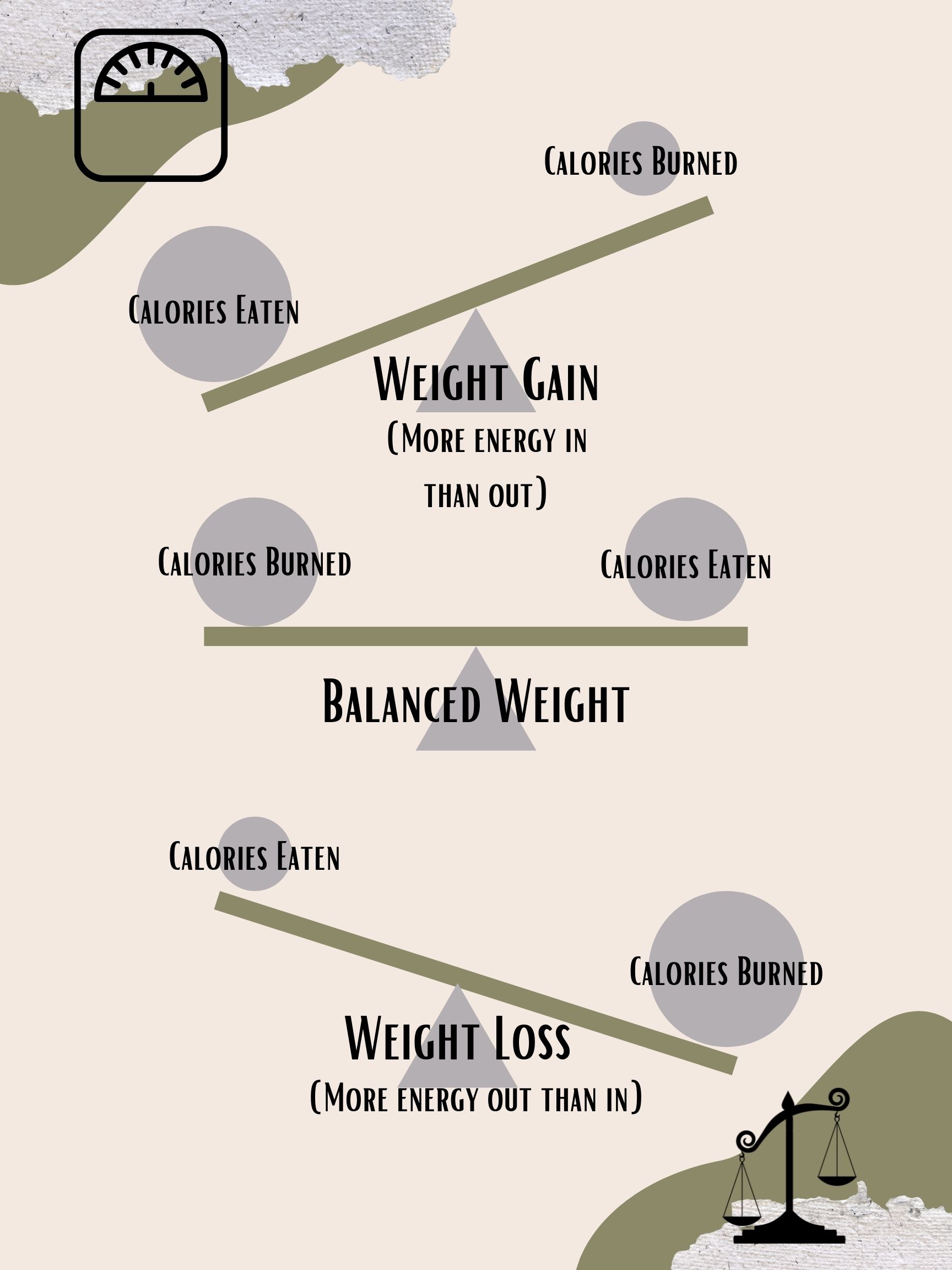Introduction
The concept of energy balance refers to balancing the energy we put into our body as foods and beverages with the energy our body uses to function. For this purpose, energy is measured in the form of Calories or kcals. Calories obtained from the foods we eat are used to do all the work our body needs to do in order to keep us alive and to perform both structured and unstructured physical activity.
When you are in a state of positive energy balance, you are consuming more calories than you burn. The excess energy from foods will be stored or used to grow (e.g., during childhood, pregnancy, and wound healing). This leads to weight gain. When you are in a state of negative energy balance, you aren’t taking in enough energy to meet your needs, so your body will need to use its stores to provide energy. This leads to weight loss. In general, weight is a good predictor of energy balance, but many other factors play a role in energy intake and energy expenditure. Some of these factors are under your control and others are not. Figure 3.1 shows the relationship between energy balance and weight.
Figure 3.1 Energy Balance and Weight Management

The amount of energy that is needed or ingested per day is measured in Calories. In addition to being the type of energy found in food, Calories are also a form of heat energy. A calorie (lowercase “c”) is the amount of heat it takes to raise 1 gram of water by 1 °C. As discussed in chapter 1, this is a very small unit of energy so to make it easier to discuss energy balance, the term kilocalorie (kcal) is used. A kilocalorie (kcal) or one thousand calories, denoted with a small “c” is synonymous with the “Calorie” (with a capital “C”). In this book we will be referring to kcals or Calories when discussing energy needs and expenditures.
The total number of kcals needed by one person is dependent on his/her body mass, age, height, biological sex, activity level, and the amount of exercise per day. If exercise is a regular part of one’s day, more kcals are required. In general, people underestimate the number of kcals ingested and overestimate the amount they burn through exercise. In order to maintain a healthy body composition over time it is important to understand how many kcals our bodies require to function. If you remember from chapter 1, fat is the most energy dense macronutrient with 9 kcals/g compared to the 4 kcals/g in carbohydrate or protein. Therefore, excess energy is stored in the body as fat. Fat is very important to us, it is the body’s way of surviving for the long term. However, too much body fat can be harmful to our health, especially when combined with a lack of physical activity. Alternatively, inadequate energy intake can negatively impact the immune system, contribute to nutrient deficiencies, and interfere with hormone production. Adequate energy intake is especially important for athletes and active individuals. Athletes who do not consume enough calories often see negative impacts on performance and may be at risk for overtraining syndrome or other injuries.
Chapter Attributions
This Open Educational Resource textbook has been adapted from:
- Lumen Learning Nutrition // CC BY 4.0
- Human Nutrition // CC BY NC SA
Media Attributions
- Weight Balance © Natalie Fox is licensed under a CC BY (Attribution) license
